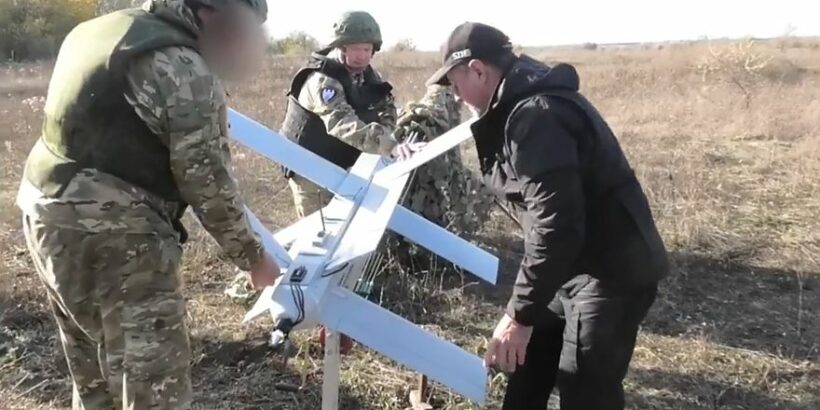Strike unmanned platform Scalpel has been launched into serial production, and several thousand copies of the kamikaze drone will be produced by the end of this year. This is reported by TASS with reference to the Vostok design bureau – the developer and manufacturer of the platform.
“We will produce Scalpel in a very large series, by the end of 2024 we will reach production in the volume of thousands of copies of the product. The exact data is not disclosed, the count is in the thousands of products. Further “Scalpel” will continue its life in the Russian army as a part of the complex with reconnaissance unmanned aerial vehicle,” stated the Vostok design bureau.
The payload mass of the Scalpel kamikaze drone is 5kg, take-off weight is 10.5kg, cruising speed is 120km/h, range is 40km. The platform is an analogue of ZALA AERO’s Lancet barrage munition.
The unmanned striking device Scalpel came for testing to the battalion Vostok in the special operation zone in September 2023. Based on the results of its use, the catapult from which the munition is launched was modernised. Previously, a rubber-propelled catapult was used, but it did not meet the payload requirements, and an option to use a pneumatic catapult was considered.
“The catapult has become more compact, easier to use, deploys three times faster. Also Scalpel received a new linkage. We are regularly improving, adjusting to new realities,” said in the telegram channel of the Vostok battalion.
The cost of a kamikaze drone with a body made of polystyrene foam is 200 thousand rubles (~2100 EUR). Styrofoam is a widespread type of foam plastic, and it is usually called so in everyday life. Representatives of Design Bureau Vostok said that in the course of the tests in parallel work is being done to increase the range of the device, now it can fly more than 40 kilometres. Its low cost is explained by the use of cheap materials and simple manufacturing and assembly processes.
Alexander Khodakovsky (Skif), former commander of the Vostok battalion and deputy head of the Rosgvardiya in the DNR, said last December that the developers of the Scalpel were not competing with anyone, but were only trying to fill a vacant niche.
“And we will not allow the price of the product to increase in mass production. If the price of the Scalpel goes up at least twice – that’s it, the point is lost,” Skif says.
According to him, in early 2023, when the idea to create a cheap strike UAV was born, there were difficulties in co-operation with leading drone manufacturers. They were demonstrating the product and its ability to barrage at high altitude for long periods of time, but the cost of the product was beyond all reasonable limits. Flying at low altitudes proved unprofitable due to the high cost and the high probability of being shot down.
“It’s a pity to lower it: to the height where it can be shot down with a machine gun. But you’ll have to lower it! How are you going to do reconnaissance when you’re above the clouds? We have three seasons of the year – low clouds! And it turns out that huge teams, for huge sums of money, create a product that cannot be used at the front,” he explained.
The main idea behind the Scalpel during its development is the cheapness of the product, its mass availability, and the ability to effectively defeat artillery and VFU MLRS at a distance of 30-40 kilometres from the front line, where our counter-battery weapons cannot reach. The kamikaze drone works in conjunction with a reconnaissance UAV. The long time of barrage flight allows it to stay in the air waiting for the coordinates of the target to be received and immediately after the operator’s command, to attack it.


